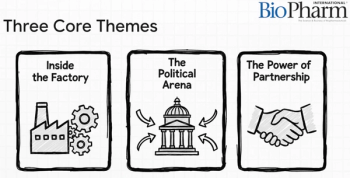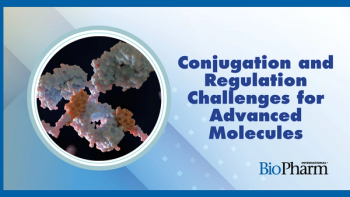
- BioPharm International September October 2025
- Volume 38
- Issue 7
- Pages: 22–25
New Technologies for Viral Clearance
Key Takeaways
- The revised ICH Q5A(R2) guideline introduces flexible validation requirements, accommodating newer modalities and reducing process steps for viral clearance.
- Diverse molecular formats and continuous processing present challenges, necessitating product-specific viral clearance assessments and regulatory adaptation.
Solutions are emerging to manage advanced modalities and evolving regulatory requirements for viral clearance.
Assuring that biologic drugs are free of viral contaminants is an essential aspect of the biomanufacturing process. As regulatory expectations have evolved and the diversity of advanced modalities and delivery systems has increased, achieving viral clearance has required new approaches. Suppliers of viral clearance technologies have responded with solutions designed to provide efficient and effective removal and inactivation of potential viral contaminants, even for the most complex products.
Evolving expectations and requirements
One of the biggest changes in the viral clearance field has been the issuance of the revised International Council for Harmonisation (ICH) Q5A(R2) guideline (1). In the new version, validation data requirements have been significantly modified, according to Nigel Jackson, senior principal engineer, R&D science with Cytiva. They are, he explains, less prescriptive, designed to evolve alongside scientific learning, and encourage the use of prior knowledge to support submissions and reduce product-specific testing.
As such, the updated guidelines have been broadened to accommodate newer modalities and pave the way for using modular claims or in-house data for viral clearance claims, according to James Berrie, technical director, global process development for integrated biologics at Lonza. “This approach is particularly impactful for more traditional biologics where the accumulation of statistically significant data sets supporting platform unit operations is likely. Speed to clinic is driving development and manufacturing progress, so platform approaches for well-understood processes facilitate the path to regulatory approval,” he remarks.
A further important change in the version of the ICH Q5A guidance is lowering of the target removal level from 6 to 4 logs, according to Sen Yang, senior product manager, Virus Filtration at MilliporeSigma. “The need to rely on polishing chromatography steps to achieve safety targets is lessened, which can decrease the number of process steps required and contribute to time and cost savings,” he says.
In general, notes Anja Tessarz, associate director of R&D and a subject matter expert in viral clearance with Charles River Laboratories, the scope of viral clearance studies can be reduced with the new revision for two key reasons. First, it is recognized that virus retentive filtration is a size-based exclusion process, and thus, it is enough that a parvovirus, as the smallest virus, is tested as the surrogate for any larger viruses. Second, end-of-life Protein A viral clearance studies are no longer required for used Protein A affinity chromatography resin because there is sufficient industry-wide data showing it removes viruses to the same standard or even better than fresh resin.
The largest challenge will be faced by contract development and manufacturing organizations (CDMOs), Tessarz says. CDMOs that might have accumulated platform data but do not own that data for specific client products will not be able to claim prior knowledge. She also notes that any external prior knowledge must be confirmed by in-house data.
Outside of changing regulations, there has been an increased emphasis on evaluation of ‘worst-case’ conditions with respect to viral clearance, says Berrie. He notes that this trend is significant enough that the industry trade group BioPhorum conducted an industry-wide survey that assessed how companies are adopting and implementing worst-case scenarios within downstream processing, including viral clearance (2).
The increasing diversity of modalities and growing number of new molecular formats has also changed performance demands. “Where the therapeutic product is a cell, or especially a virus, the challenges of clearing contaminating viruses significantly increase,” Jackson observes.
In addition, while many companies have developed platform processes for which the ‘read out’ of viral clearance studies can be reliably anticipated, the rise in non-platform and more complex downstream processing technologies has reduced that predictability, increasing the importance of product- and process-specific viral clearance assessments, Berrie says.
Conducting appropriate pre-study evaluations is also becoming more crucial due to the greater complexity of feed streams, according to Berrie. As an example, he notes that if the potential for protein aggregation exists, a mitigation plan will need to be developed ahead of spiking study execution.
Others issues noted by Yang include achieving suitable throughputs for difficult-to-filter molecules and higher concentration products, implementation of viral clearance as a continuous process, and the rising cost of virus retentive filters, which has a significant impact on validation costs.
Slowly adapting
As with the overall pharmaceutical industry, the viral clearance field tends to be conservative and slow to make changes. With respect to the new ICH Q5A(R2) guideline, one key issue is that many local authorities have not yet implemented the new revision, according to Tessarz. “That has slowed adoption of different approaches because drug makers typically produce for a broad global market and do not want to take any compliance risks,” she says.
With respect to new modalities, Jackson comments that existing technologies and methods have been adapted to deliver viral clearance for new modalities such as viral-vector gene therapies. “Operations such as detergent treatment, affinity chromatography, anion exchange chromatography and retrovirus grade virus filters can be applied in the same way as traditional recombinant protein approaches for many viral vectors, especially adeno-associated viruses. The lack of small virus filtration (because the viral vector product is at least the same size or larger) generally leads to lower overall parvovirus clearance compared to traditional approaches, however.”
One interesting solution to this problem is, according to Jackson, to apply virus filtration to the cell-culture media and protect against one of the most likely entry and proliferation points for parvoviruses, reducing the demand on the chromatography steps alone. He adds that such an approach is also applicable to cell therapies, where viral clearance steps are not typically possible.
Challenges created by molecular and regulatory diversity and uncertainty
The uncertainty surrounding implementation and validation of continuous processes is, in fact, one of a few important challenges in the field of viral clearance today, according to Jackson. The lack of global implementation of the revised ICH Q5A guidance is a considerable issue noted by Tessarz, as drug developers must adapt the scope of viral clearance studies to meet regulatory requirements in all the countries in which they hope to market their products.
Cell and virus-based therapies, meanwhile, present new challenges and require increasing reliance on detection alongside clearance, according to Yang.
“Learning how to elevate clearance in new modalities to match the performance of traditional products is another important challenge,” agrees Jackson.
The challenges faced by those responsible for demonstrating viral clearance for new molecular formats such as in cell and gene therapy were considered in an industry-wide collaboration paper recently (4), adds Berrie.
In addition, even though the revised version of the ICH Q5A guidance now includes cell and gene therapy products, it acknowledges that viral clearance is not possible for all products in these categories or is very limited, adds Tessarz. In these cases, she emphasizes that manufacturers must source well-characterized materials and have testing strategies in place to mitigate any risk of contamination.
Even more uncertainty exists when filing for marketing approval for early-stage gene therapy products as no current guidelines are in place, observes Tessarz. “For some products, only written risk assessments are submitted, while in others detailed viral clearance studies are performed,” she says. Here again, strategy decisions must be made on a case-by-case basis depending on whether the production cell line is known to contain any endogenous viruses and if there is a risk of copurification of helper, adventitious, or endogenous viruses.
Many novel formats and high-concentration antibody products also suffer from a higher risk of aggregation, particularly during thawing after shipment in the frozen state (e.g., for use in viral clearance studies at a testing facility) and during virus retentive filtration. This behavior can have impacts both for accurate determination of viral clearance performance and on final product quality, according to Tessarz.
For Berrie, a key challenge is the demand for material from production processes to perform viral clearance studies. Approaches for addressing this challenge include dual or co-spiking and establishment of viral clearance models (VCMs). The former, he says, can not only reduce the amount of material taken for viral clearance assessment by approximately 50%, but also the time for documentation review and, ultimately, the delivery of the viral clearance package. VCMs can limit laboratory work to a single process step and use viral clearance claims for virus retentive filtration and detergent and pH inactivation steps with platform or in-house data, thereby reducing the cost, material use, and effort required to generate a full viral clearance package. “When combined, VCM and dual spiking strategies represent a powerful means for minimizing viral clearance timelines and resource demands,” he contends.
These solutions are just two examples of how biopharmaceutical companies and their suppliers are working to address ongoing and emerging challenges to viral clearance. “The industry will respond as new market segments expand and mature, continuous processing becomes more prevalent, and regulatory expectations continue to evolve by bringing further new methods and technologies to maximize viral safety—as was achieved for traditional processing approaches and modalities,” Jackson concludes.
Continuous processing considerations
Numerous approaches to continuous viral inactivation and clearance exist today, with no single platform process established across manufacturers. “Continuous processing can refer to upstream only, the entire downstream process, or one or two downstream unit operations. It may or may not include hold steps in which material is collected before being passed on to the next unit operation. The first challenge, therefore, is determined what is going to be involved,” says Tessarz. The second, she adds, is to understand applicable regulations, although she does note that generally different approaches are allowed. She points to the official ICH Q5A (R2) training material (3) discussing continuous Protein A chromatography for viral clearance as an example.
Looking at specific solutions, continuous low pH virus inactivation is being explored and should integrate well with other unit operations, according to Yang. Jackson adds that the simplest application of virus inactivation in continuous processing uses alternating mixers operating sequentially through the traditional virus inactivation steps. In addition, technologies such as periodic counter current chromatography can deliver the affinity and anion exchange clearance steps effectively either side of this inactivation.
With respect to filtration, the best filters, says Jackson, experience no measured impact on virus reduction from feed variation, pressure interruptions, or low-pressure processing and thus are applicable for expanding the risk design space of continuous processing.
However, Yang observes that filtration may need to operate at lower flowrates when integrated with other continuous unit operations. He adds that solutions to maintain viral clearance robustness under these conditions, such as high-area-ratio serial filtration, have been proposed.
Finally, Yang notes that while not necessarily a challenge to successful continuous viral clearance at scale, strategies for conducting viral clearance studies in continuous unit operations are not yet clearly defined, with uncertainties remaining around the definition of a batch, the appropriate duration/frequency of spiking, and other issues. “Currently it is necessary to determine these parameters on a case-by-case basis by each drug developer,” he says.
New technologies support improved viral clearance
Recent advances in viral clearance technologies reflect the growing complexity of biologics and the industry's need for flexible, robust solutions. New solutions are being developed for production-scale operations, conducting virus spiking studies to demonstrate clearance, and detecting and identifying virus contaminants. Key examples include the following:
- expansion of detergent options for viral inactivation
- affinity chromatography resins, which Jackson says have been particularly beneficial for removal of contaminating viruses from viral vectors
- new cation exchange chromatography resins for flow-through removal of aggregates that Yang notes also have the potential for virus removal
- next-generation nanofiltration (membrane chromatography) systems for continuous virus reduction filtration to avoid concerns about small virus passage across virus retentive filters
- ultraviolet (UV) irradiation for virus inactivation, which Berrie notes is experiencing renewed interest driven by the rise of new molecular formats and the benefit of its broad-spectrum activity against viral targets (both enveloped and non-enveloped viruses) compared with traditional viral inactivation technologies and thus offers the potential to demonstrate sufficient clearance in fewer steps
- continuous virus inactivation approaches
- analytical techniques such as quantitative real-time polymerase chain reaction (qPCR) and other more sensitive assays.
With respect to viral clearance studies, Tessarz highlights several new approaches to spiking. One involves the use of multi-virus spikes rather than challenging a process step with one virus per process run, with analysis by both qPCR and more sensitive cell-based infectivity assays. “The reduced number of process runs required during a viral clearance study means that less resources are required, notably less process starting material,” she says. That is especially beneficial for advanced therapies such as gene therapies because often only limited and costly material is available.
A second approach involves spiking with non-infectious virus particles, which Tessarz says opens the possibility to perform viral clearance testing at the production site without risk of virus contamination. She adds that the new ICH Q5A (R2) revision does not have as strong a focus on infectious virus particles, and has, for instance, accepted the use of non-infectious virus particle assays for retrovirus-like particles commonly found in some production cell lines.
Tessarz also highlights that digital evaluation of cell-based assays can increase standardization, minimize human bias, and potentially reduce incubation times. She and Yang both note that artificial intelligence for sample analysis is being explored and may in the future have a significant impact, but as yet has not been proven suitable for use in a quality-ensured environment.
References
- ICH. Q5A(R2), Guideline on Viral Safety Evaluation of Biotechnology Products Derived from Cell Lines of Human or Animal Origin, Step 5 version (ICH, 2024).
- Shah, D.A.; et al. Worst-Case Conditions for Viral Clearance. BioProcess Intl. 2022 20(11-12) pp/7-14.
- ICH. ICH Q5A, Guideline on Viral Safety Evaluation of Biotechnology Products Derived from Cell Lines of Human or Animal Origin: Training Material Modules 0–3 (ICH, 2025).
https://database.ich.org/sites/default/files/Q5A%28R2%29TrainingMaterialModule1-3_2025_0428.pdf - BioPhorum. Validation: Current Approaches and Considerations for Viral Clearance in Cell and Gene Therapy. BioPhorum.com. June 12, 2023.
https://www.biophorum.com/download/validation-current-approaches-and-considerations-for-viral-clearance-in-cell-and-gene-therapy/
Articles in this issue
3 months ago
Optimizing Testing in Cell and Gene TherapyNewsletter
Stay at the forefront of biopharmaceutical innovation—subscribe to BioPharm International for expert insights on drug development, manufacturing, compliance, and more.




